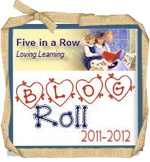This year we are co-oping Beyond Five in a Row - Volume one. We are starting with Betsy Ross and will be spending 4 co-op meetings as we row this book. I think my family will probably enjoy it a bit longer than that as we got a later start. The first meeting was at my house and my co-teacher and I were the same ones that started off the co-op last year.
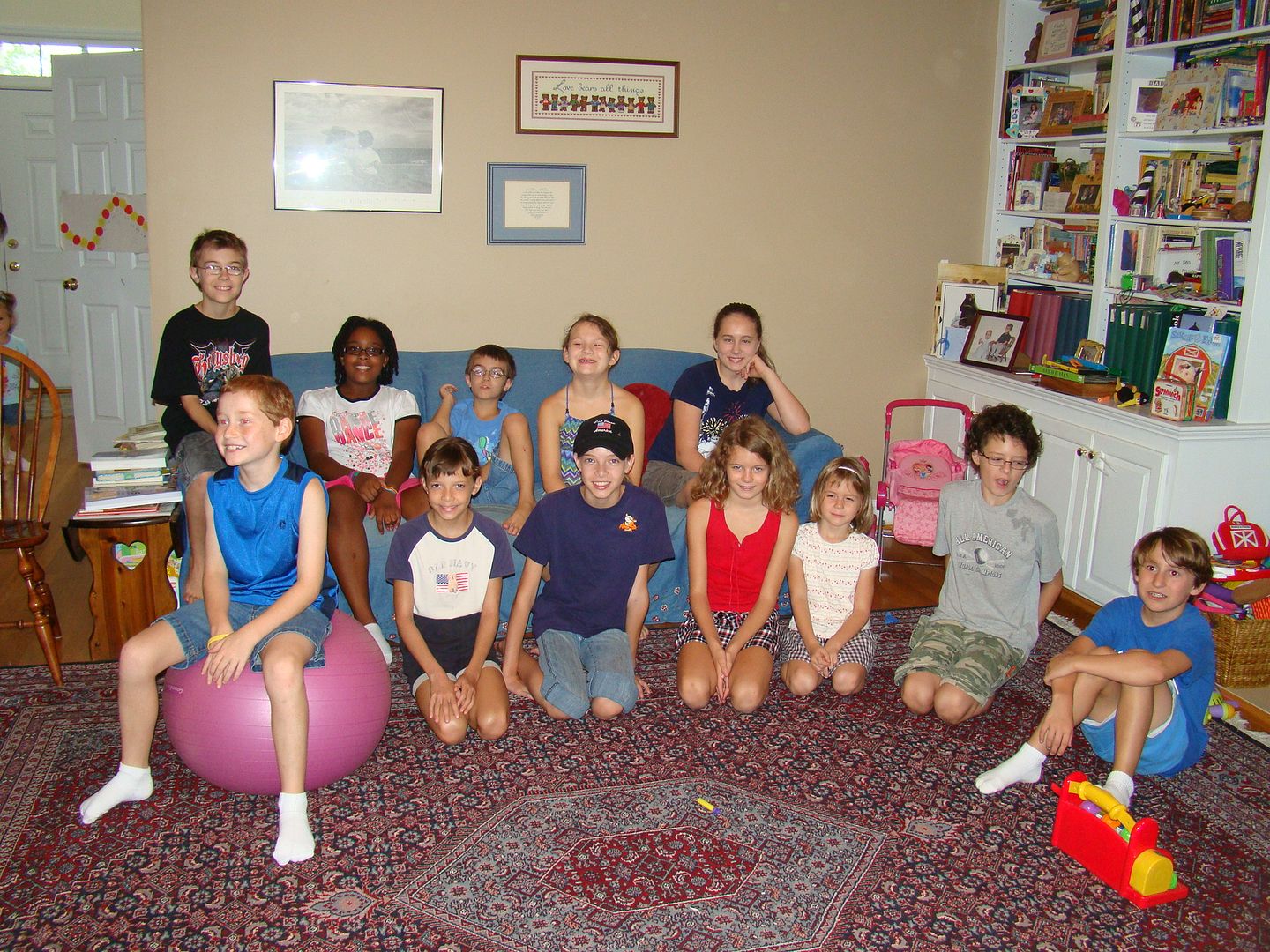
Here is a little about the set-up of our group for those who are interested. We meet every other week for approximately 2-2.5 hours. We will be rowing/doing 2 books each semester. We will be meeting 8 times over the course of the semester and so each book will have 4 meeting times. We also have 8 moms who will be splitting the teaching responsibilities this year too. We teach in pairs for each co-op. Each mom will have 4 teaching times over the course of the year (2 each in the fall and spring) and 2 times to host (1 time each in the fall and spring). We looked at the books and tried to divide them evenly over the course of 4 weeks. Here is what our schedule looks like.
Betsy Ross - The book has 17 chapters. Each time we meet, we will cover 4 chapters (and in the last meeting there will be 5). What that means is that the teaching pair can cover any topics in "their chapters". For the first meeting, we had chapters 1-4 and covered several topics in those chapters. We try to notify the group of the topics that we'll be covering at least two weeks in advance so that those topics aren't covered at home.
Homer Price - There are 6 chapters in this book. We are doing something a little different with this book. We decided to cover 2 chapters in each of the meeting times. We will be rowing The Clown of God in the other meeting time. This is because this is the book we will be doing for our group's Family Event this year. I think it will be a fun way for this group to get excited about that event. It ends up being just 2 days before the event.
Thomas Edison and Boxcar Children will be rowed in the spring and are similar to these two.
So for our first co-op we met at my house. We did not read the chapters (as we did the books for Volume 4) because it would have taken too long. One of the gals had the group idea to have her children do a summary of each of the chapters of the book. I think that is a great way to refresh their memories of what occured during the book and to prepare them for co-op.
We started off with a devotion from the Beyond FIAR Bible supplement on kindness. Next we did Sensory Awareness Activities. Interestingly, both of the teaching moms have children with Sensory Processing Disorder. We used activities found in the book Sense-abilities as well as on the internet.
We started with a discussion on the sense of touch. What types of things can you feel? (cold, hot, prickly, soft, etc.) We then had texture bag filled with similar sized fruits (apple, orange, avocado, kiwi, peach, plum). The children reached into the bag and tried to identify the fruit by touch.

They pulled it out after the guessed to see if they were correct.
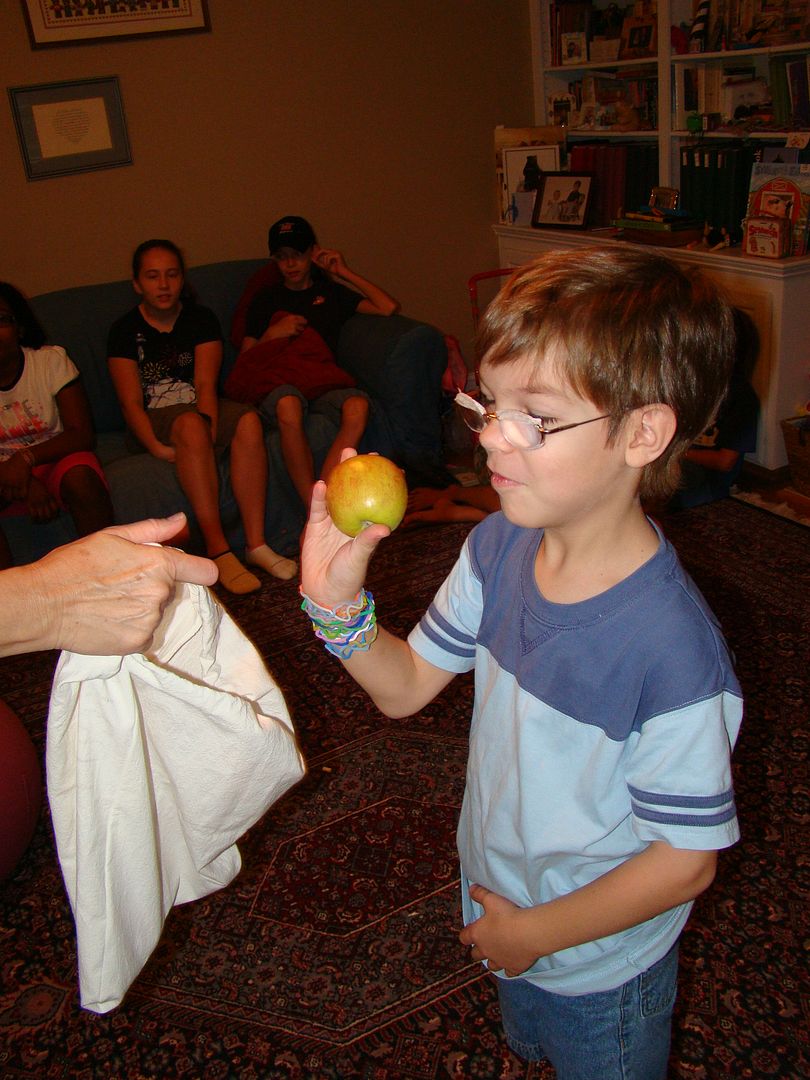
The next texture bags dealt with shape. There were a varity of items (peppermint stick, thimble, bolt, feather, eraser, etc). Each child reached in and selected one item. They were asked to give three adjectives describing the object and then to guess what it was. They were very good at this.
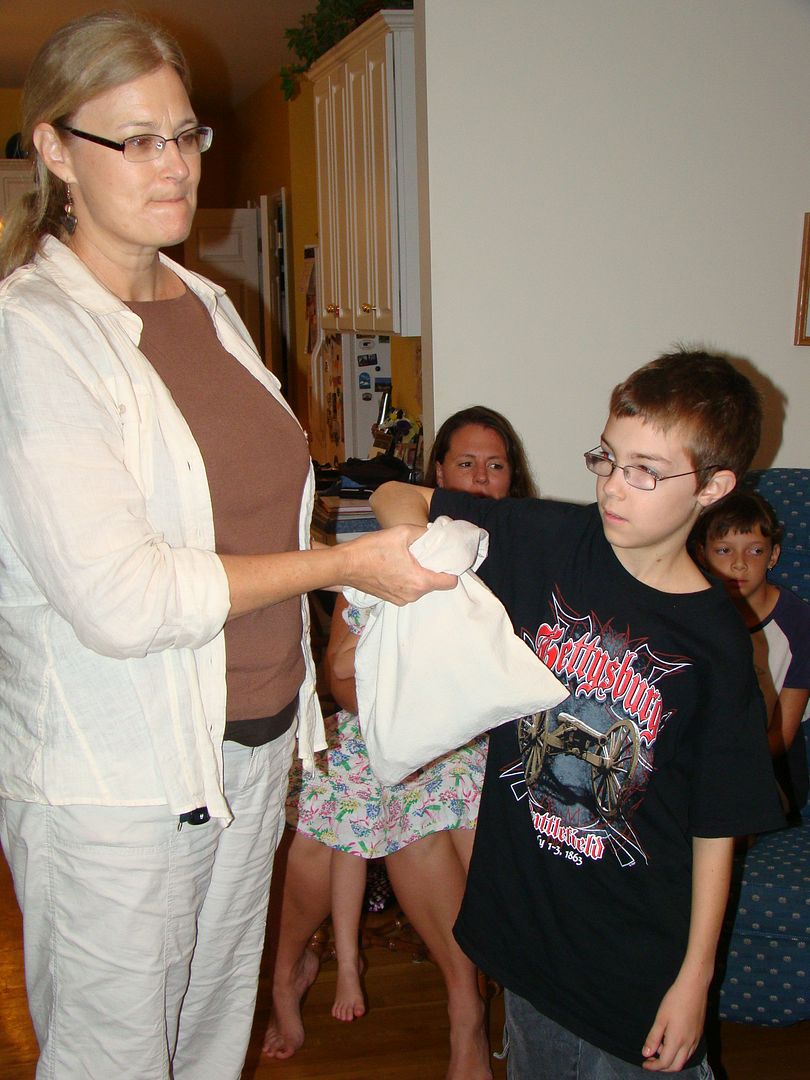
An experiement on hot and cold involved them placing one index finger in a mug of ice water and the other in a mug of warm water. After 20 seconds, they put both fingers into a mug of room temp water to see how it felt. One finger (from ice water) said that this water was warm while the other said it was cold. Interesting!
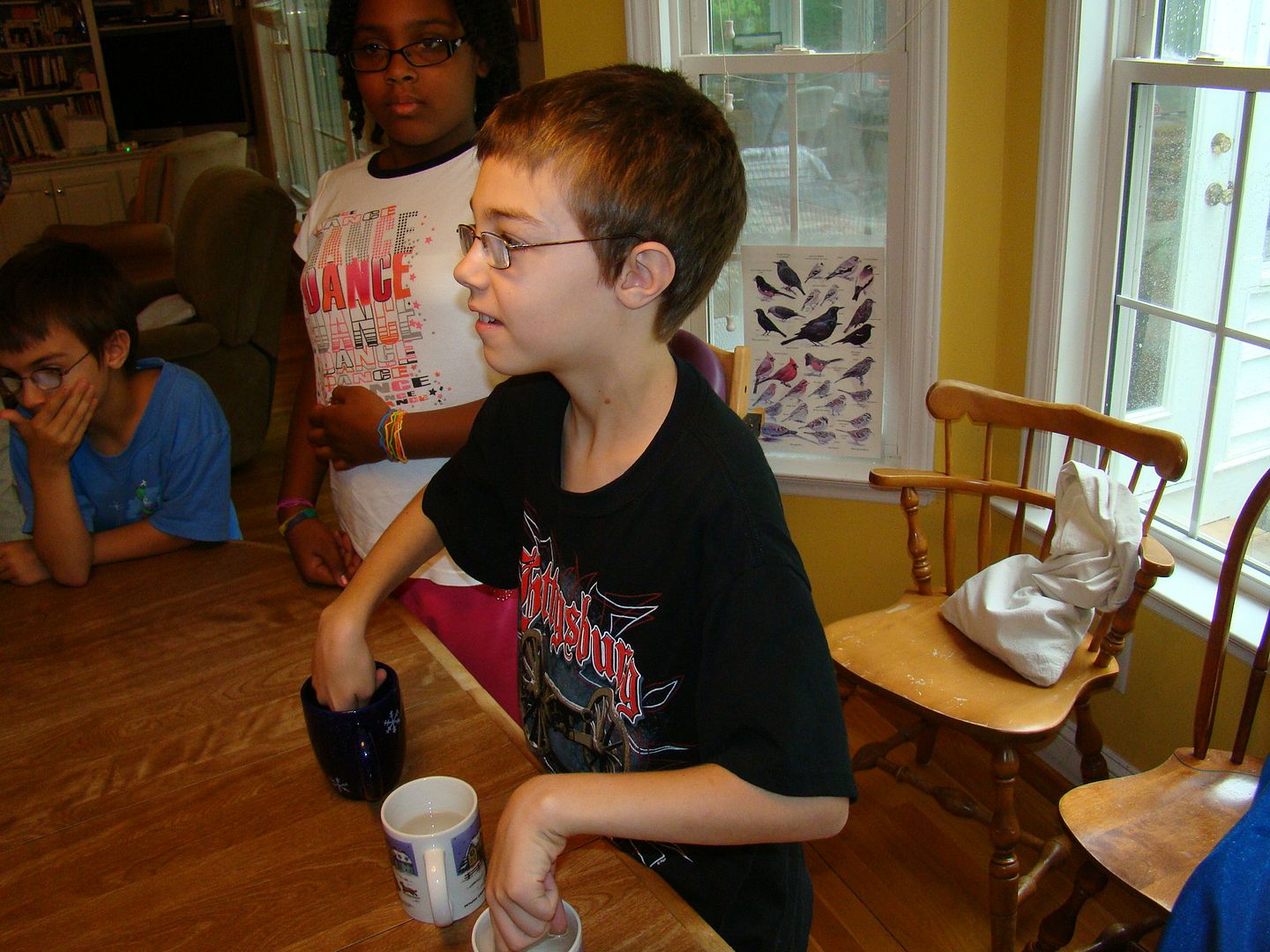
The next experiment was done in pairs. One person touched their partners arm with either one or two pencils. They started holding them apart and then moved closer. The partner tried to say how many points he/she felt. It's harder than it sounds.

Another experiment involved cold when the children held ice for 30 seconds and then tried to pick up a grain of rice. They were able to do it, but many couldn't really feel it.
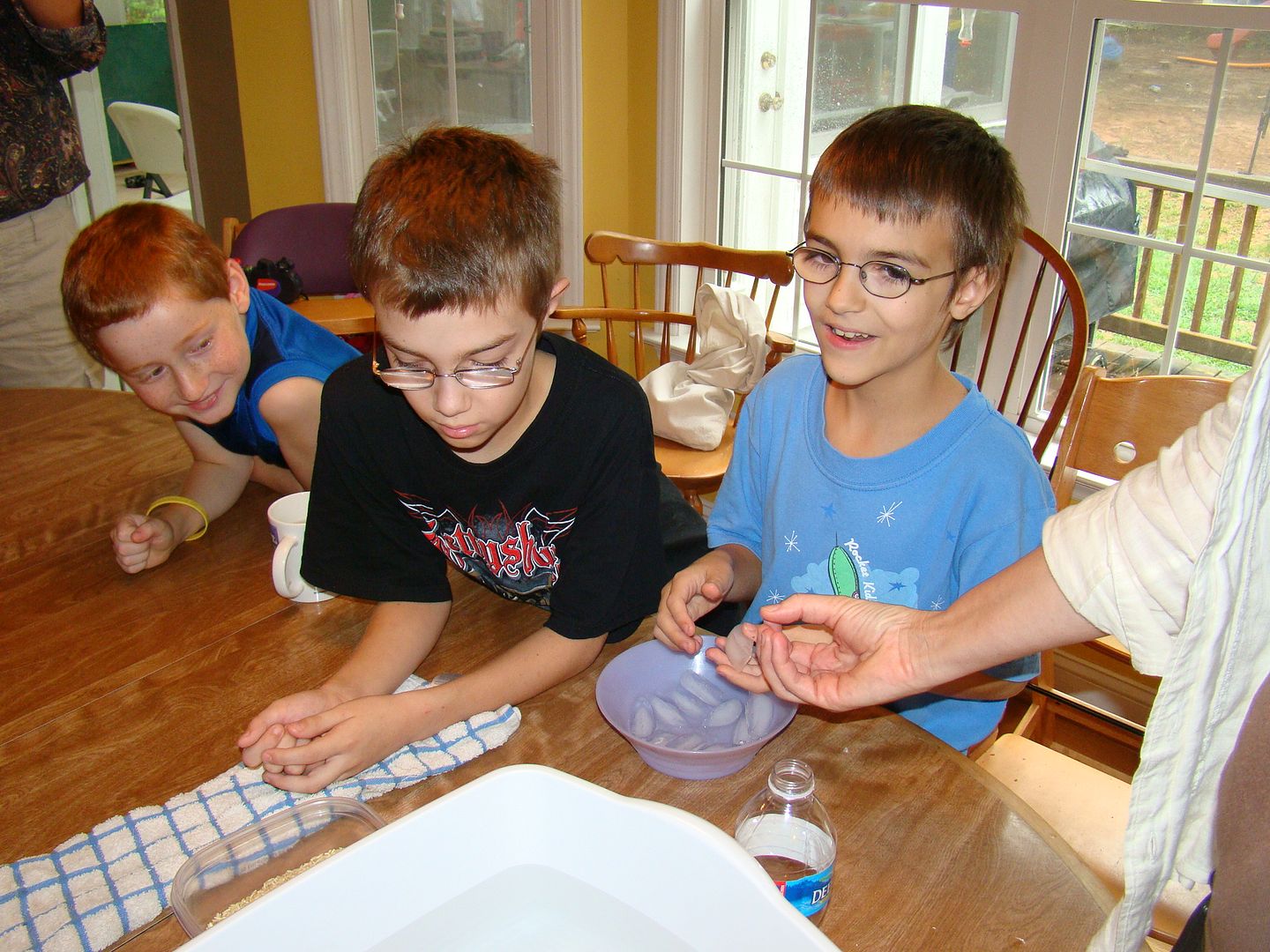
We transitioned to hearing by talking about vibrations. Put your hand on your throat to feel the vibrations when you cough, laugh, hum, growl.
We could see vibrations when we hit metal rulers.
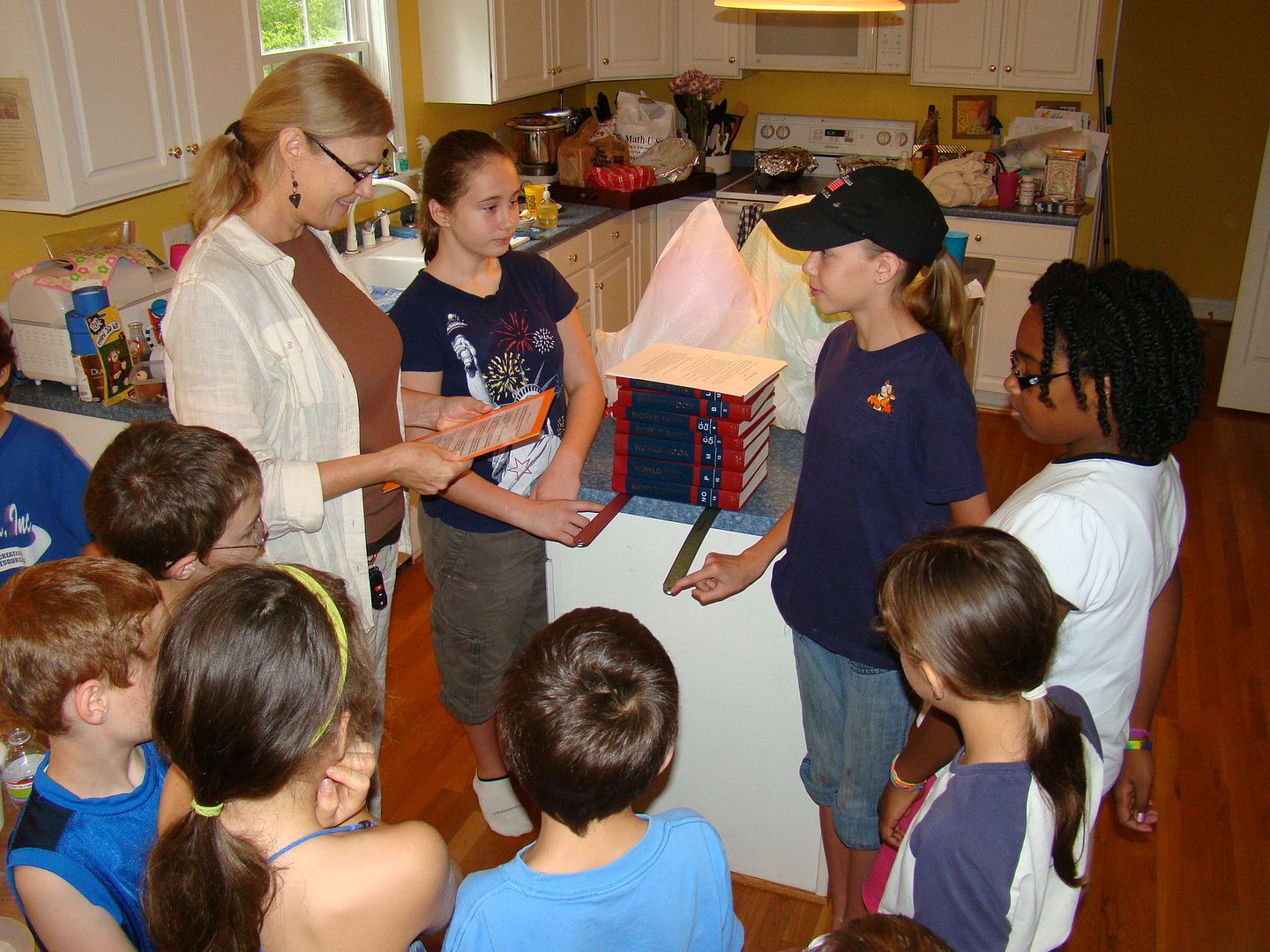
We could also see it in the ripples made by adding food coloring to a bowl of water. The children paired up to feel more vibrations when their partner talked into a balloon pressed against their ear.
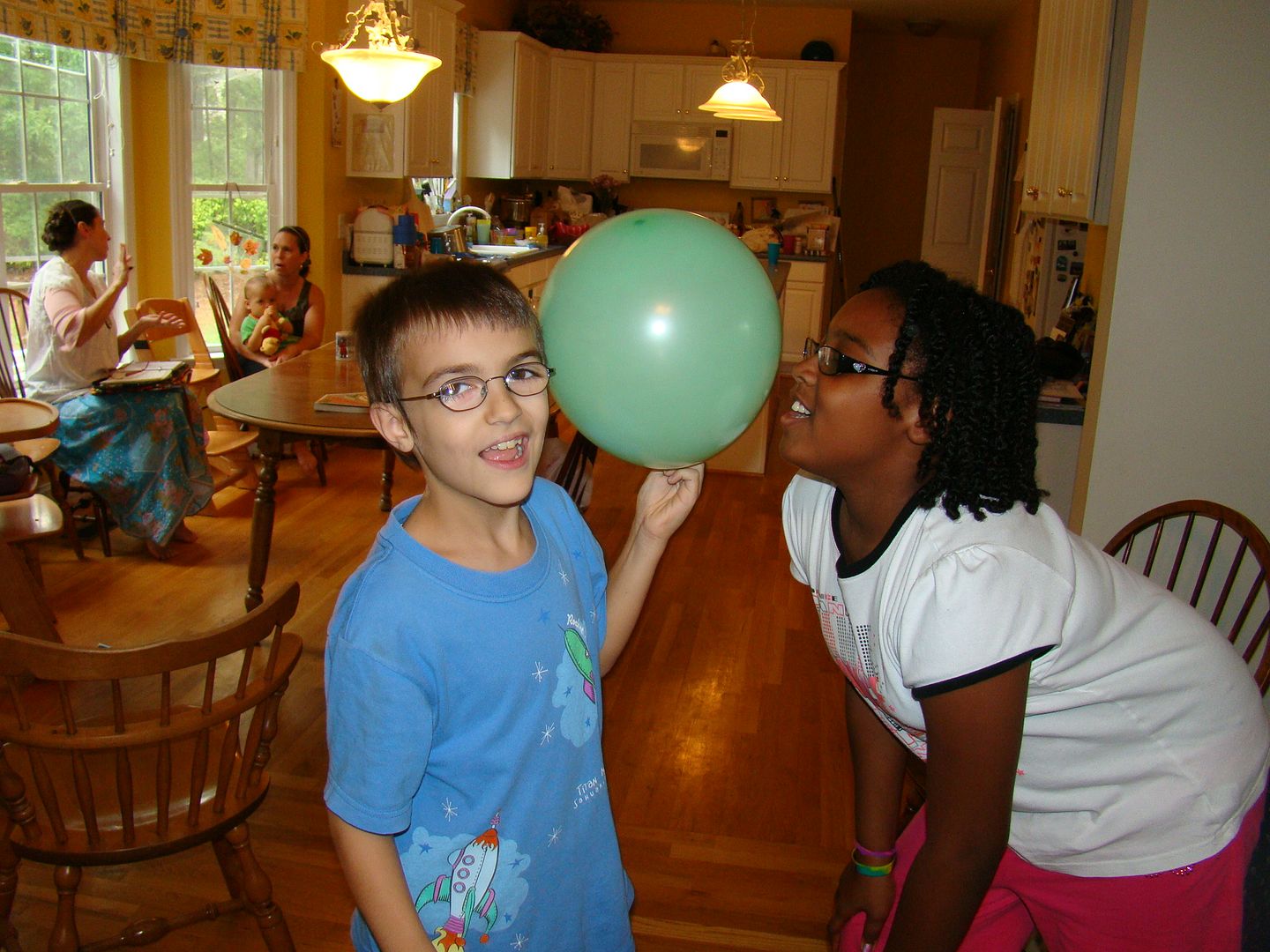
We made a hydrophone by cutting off the bottom of a plastic bottle and placing it in a bowl of water. The children put their ear to the bottle. Two coins were hit together under the water and then above the water to note the difference in sound waves.
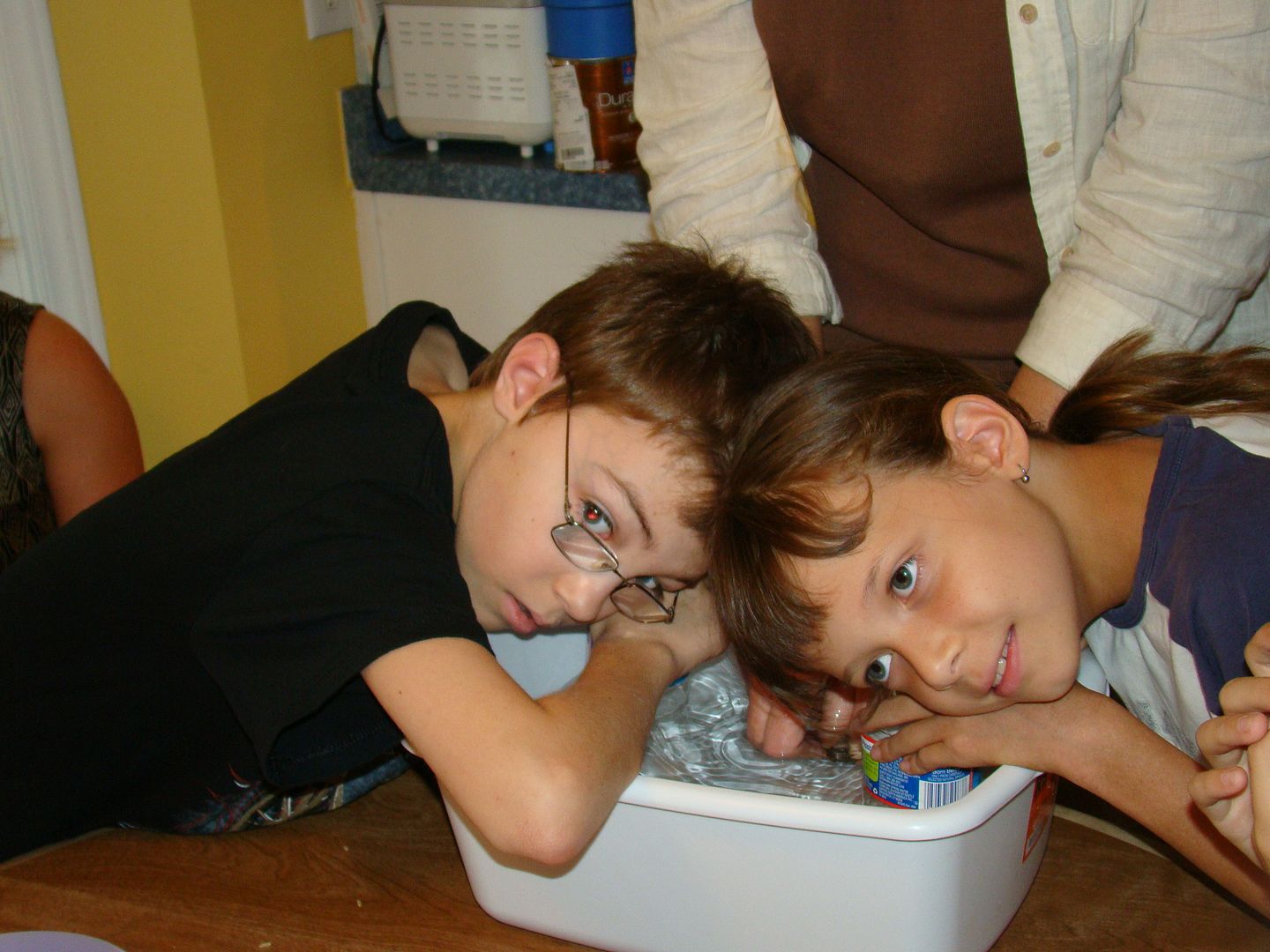
Pictures are going to be a little more scarce now as I was leading (and thus not taking pictures). In order to get their snack, they had to first play a guessing game. We had clues for various foods and they had to guess what they were. The foods were either mentioned in the story or available during that time period. Would you like to try it? Answers are at the end.
1. What is something that starts wet and becomes dry in order to eat? Oldest recorded use is in Ancient Egyptian civilizations. A bakery in San Francisco has a culture that has been in use since 1849.
2. Used to sooth tummies (it relaxes the smooth muscles around the intestine aiding in digestion). An herb honored in Greek myth. Something sweet enjoyed for hundreds of years.
3. Originated in China and was a favorite food of Emperors. Books on making jam were published in colonial America in the late 1600s. It grows and is popular in the South. It has a fuzzy skin.
4. This has seeds on the outside. The most famous public eating of this food is at Wimbleton each year. (It is served there with cream.) US is the leading producer of this food.
5. A snack enjoyed all over the world for hundreds of years. It probably originated in Mexico. It was an integral part of Aztec Indian ceremonies.
6. First introduced by a South American tribe in 1550. It is and has been used as a staple when travelling long distances via ship, wagon, etc. It is made by covering food with salt and then drying. It is still popular today.
7. This food was enjoyed in Ancient Rome. Name was not given until the 18th century. Term was used to describe fiery, spiced dishes condiments.
Answers:
1. sourdough bread, 2. Peppermint sticks, 3. Peach (peach jam), 4. Strawberries (strawberry jelly), 5. Popcorn, 6. Beef jerky, 7. Deviled eggs
We had all of the above for snacks and while they were finishing up, we had a discussion about Quaker children and what their lives would have been like at that time period - what types of chores did they do, what games did they play, what was life like?
We learned that riddles were popular and try our hand at solving some. Here they are in case you want to try them out.
1.What flies up, but is always down?
2. When is a boy most like a bear?
3. What kind of room is not in a house?
4. What has teeth but cannot eat?
5. What has a tongue but cannot talk?
6. What has 3 feet but cannot walk?
7. What has a mouth but cannot talk?
8. What falls down but never gets hurt?
9. What has four legs, a head, and a foot but does not live?
10. What gets bigger the more you take away from it?
11. What is more useful when it’s broken?
12. What can be seen but not touched and when put in a barrel makes it lighter?
1. Goosefeathers. 2. When he is barefoot. 3. A mushroom. 4. A comb. 5. A shoe. 6. A yardstick. 7. A river. 8. Snow. 9. A bed. 10. A hole. 11. An egg. 12. A hole.
We then tried a couple of games. The first was Blindman's Bluff. I really wasn't sure how this one would turn out, but they really seemed to have fun with it and everyone wanted a turn to be "it".
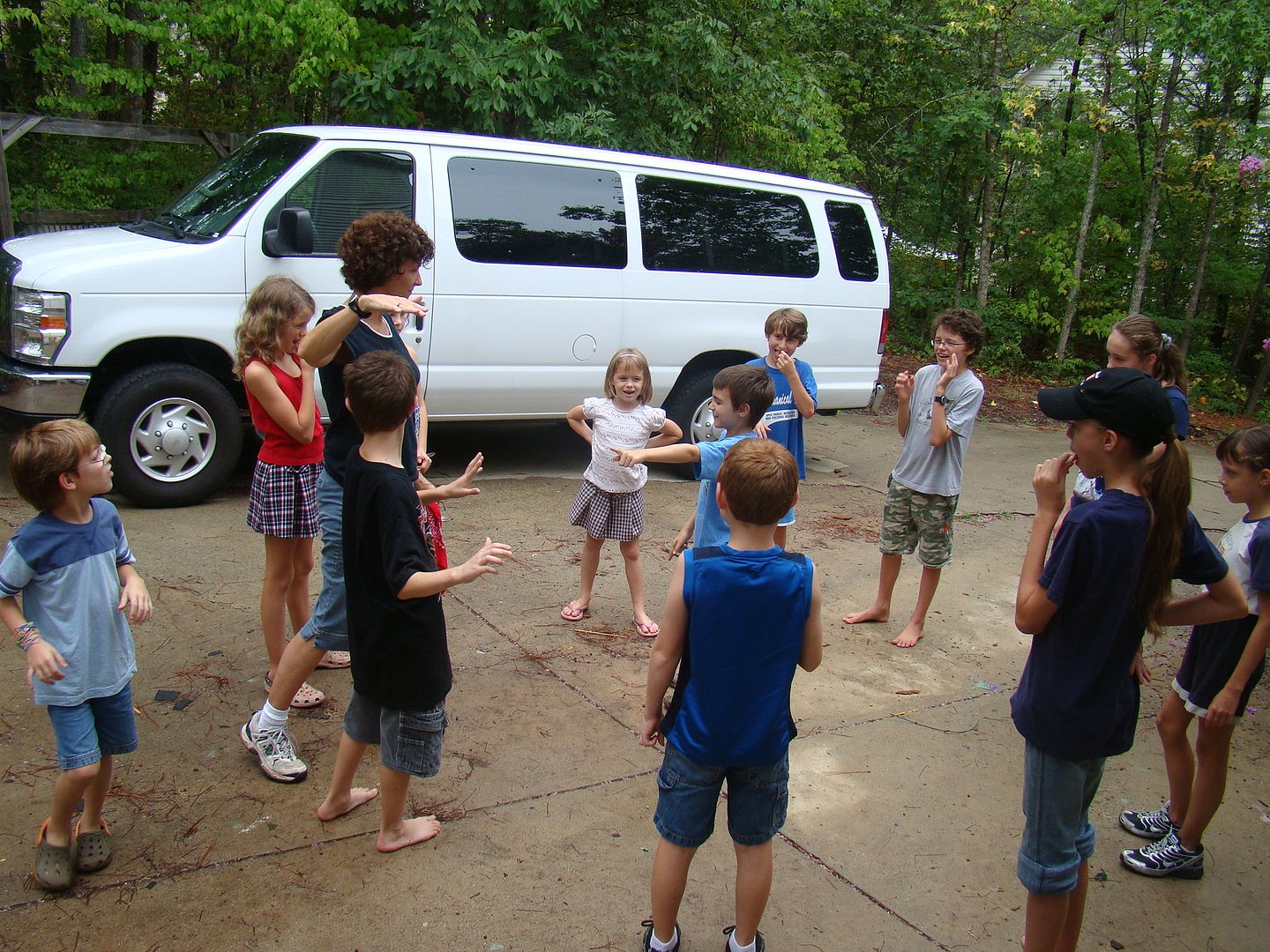
We also played a game called Nine Men's Morris. Sometimes people had a game board and other times they made one from materials they had on hand. We did this by making a board out of chalk and then using different colored beans for markers. We played one round so that everyone understood the rules.

Then we made up more boards so lots of people could play at the same time.
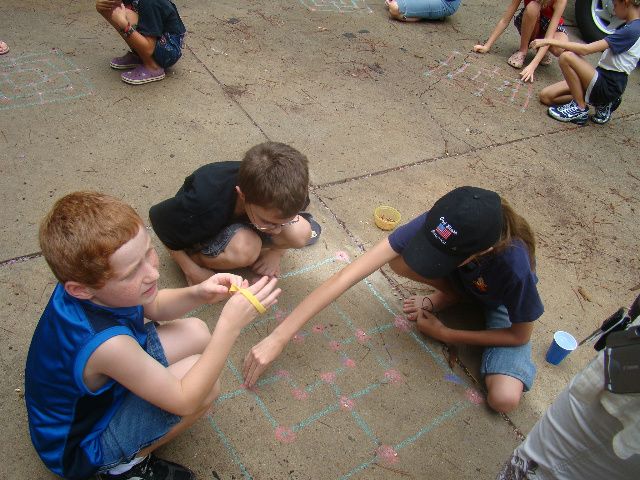
It was a fun morning - co-op always is fun! I'm thankful for this fun way of shared learning with a delightful group of people. I"m looking forward to our next c0-op later this week!
Blessings
Leslie



